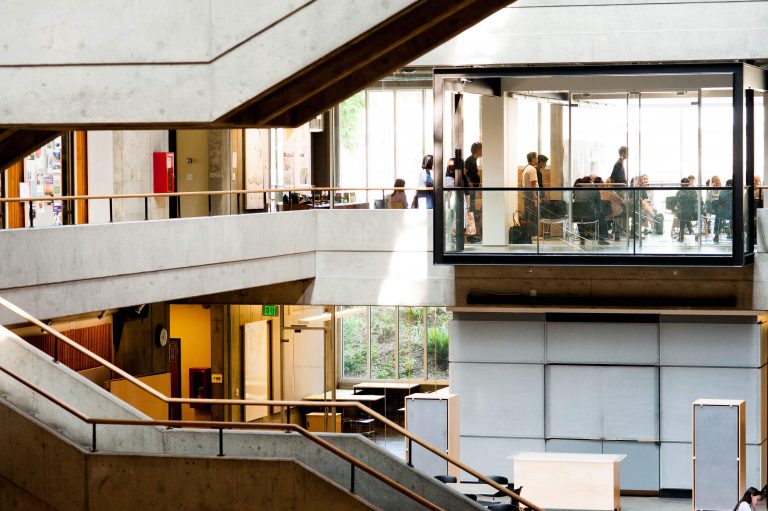Published on January 13, 2021

Throughout history, we’ve seen shifts in how people communicate regarding design. The question of how communication happens between architect and builder is as fundamental today as it was hundreds of years ago. While the dynamics of these communication processes are nuanced, our understanding of them has been colored by a narrative of the past. One CBE faculty member is challenging the standard narrative about how buildings get made, from design to construction through design communication and knowledge exchange.
Today, we have the architect and the builder. Separate and yet when visiting St. Peter’s in Rome, or looking skyward in our own Gould Court with its intersecting brutalist concrete walkways and stairways, the final products are intrinsically linked to both professions. But, the roles weren’t always defined separately.
What changed? How did these roles communicate? College of Built Environments’ Professor Ann Huppert’s new book project, Building Knowledge: The Culture of Construction in Sixteenth-Century Rome, investigates the shift that separated the architect from the builder, and the way knowledge of the building project was shared and communicated between those two distinct realms of practice. Huppert charts how important information on the building process was passed between individuals at the project site, and employs digital humanities methods and tools to map the networks of individuals and physical locations of these material exchanges
Huppert, an architectural historian, thinks about the different roles of the architect and the builder a lot. Huppert’s background as a historian gives her a unique perspective in the realm of architecture, one where she is often thinking about people. Professor Huppert’s fascination goes beyond the professions of the 16th-century architects and builders she studies; she thinks about the materials each building was made with, she questions how those builders knew what stone to use, and how they got their building materials to work sites. Further, she ponders the mechanism of communications the architect used to relay the building information to the builder and vice versa. Huppert’s latest work explores the central question of knowledge. How was knowledge regarding the design and construction of 16th-century architecture transmitted between the architects and the builders? What did collaboration between designer and builder look like? And in asking those questions we are confronted with the question of whose hands are building cities?
Continue reading at the CBE Research Portal.
Originally written as a Spotlight for the College of Built Environments Research Portal.